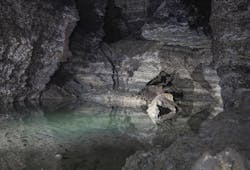Study shows 6 quintillion gallons of groundwater in Earth’s crust
BOSTON — Nov. 12, 2015 — Researchers updated the estimated amount of groundwater for the first time in 40 years, according to the Los Angeles Times.
Published in Nature Geoscience, scientists used thousands more data points than were used in the 1970s study, noted the article. The new research includes information on the age of current groundwater to determine how often it can be replenished as humans use it.
“Our maps and estimates show where the groundwater is quickly being renewed and where it is old and stagnant and non-renewable,” said Tom Gleeson, a hydrogeologist at the University of Victoria and leader of the study, in the article.
According to the research team, the upper 1.2 miles of the Earth’s crust currently holds six quintillion gallons of groundwater, shared the article. Above ground, the amount would form a layer of water 600 feet high across the globe.
To determine how long the water had been in the ground, the scientists measured the amount of tritium contained in the groundwater, reported the article. Since this radioactive isotope of hydrogen increased in rainwater about 50 years ago, this measurement showed which groundwater was less than 50 years old.
The measurements showed that 5.6 percent of groundwater is less than 50 years old, a finding Gleeson noted was the biggest surprise of the study.
“This global view of groundwater will, hopefully, raise awareness that our youngest groundwater resources — those that are most sensitive to anthropogenic and natural environmental change — are finite," wrote Rutgers University’s Ying Fan, on the implications of the study.
Fan also stated in the article that ancient groundwater could provide clues into the planet’s climate and tectonic history.
Gleeson’s team will next try to find out when groundwater will run out by comparing the estimates of young groundwater with local estimates of groundwater use, noted the article.
You can find the entire article here.
